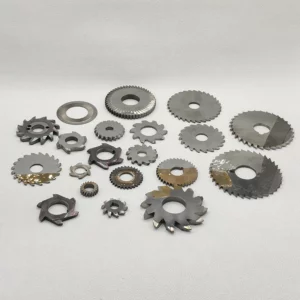Carbide cold saw blades have revolutionized the metal cutting industry with their exceptional durability, precision, and efficiency. These cutting tools are engineered to withstand the rigors of heavy-duty cutting applications while delivering consistent performance and superior results. In this article, we will explore how carbide cold saw blades can extend tool life and minimize downtime, ultimately optimizing productivity in industrial settings.
Carbide cold saw blades are renowned for their longevity and resilience in demanding cutting environments. Unlike conventional steel blades, which may dull quickly when cutting tough materials, carbide blades are constructed with a combination of tungsten carbide tips and a hardened steel body. This unique composition enhances the blade’s resistance to wear, abrasion, and heat, ensuring prolonged cutting performance without frequent replacement.
One of the primary ways carbide cold saw blades extend tool life is through their exceptional cutting efficiency. The precision-ground carbide teeth maintain sharpness over extended periods, allowing the blade to make clean, accurate cuts with minimal friction and heat generation. This reduces the wear and tear on the blade, preserving its cutting edge and prolonging its lifespan.
Furthermore, carbide cold saw blades are designed to dissipate heat effectively during the cutting process. Heat buildup is a common issue when cutting metal, as it can accelerate blade wear and compromise cutting quality. However, carbide blades feature specialized heat-resistant coatings and geometry that help dissipate heat away from the cutting edge, preventing overheating and preserving the blade’s integrity.
Another key factor contributing to the longevity of carbide cold saw blades is their optimized tooth design. These blades are engineered with variable tooth pitches and angles to accommodate different cutting materials and applications. By ensuring proper chip clearance and minimizing tooth-to-material contact, carbide blades reduce friction and heat generation, thereby extending tool life and reducing the risk of premature wear.
In addition to their durability, carbide cold saw blades offer significant advantages in terms of reducing downtime in industrial operations. The ability to maintain sharpness and cutting performance over an extended period means fewer blade changes are required, resulting in less downtime for blade replacement and maintenance.
Moreover, the precise cutting capabilities of carbide cold saw blades minimize the need for secondary finishing operations, such as deburring or edge grinding. This streamlines the production process and reduces overall machining time, allowing manufacturers to achieve higher throughput and productivity levels.
Furthermore, carbide cold saw blades contribute to enhanced workplace safety by minimizing the risk of blade-related accidents and injuries. The consistent cutting performance and reduced propensity for blade dulling reduce the likelihood of kickbacks, binding, and other cutting hazards, creating a safer working environment for operators.
In conclusion, carbide cold saw blades represent a cutting-edge solution for extending tool life and reducing downtime in metal cutting applications. Their exceptional durability, cutting efficiency, and heat dissipation properties make them indispensable tools for maximizing productivity and profitability in industrial settings. By investing in carbide cold saw blades, manufacturers can achieve longer-lasting performance, minimize production interruptions, and ultimately gain a competitive edge in the marketplace.
